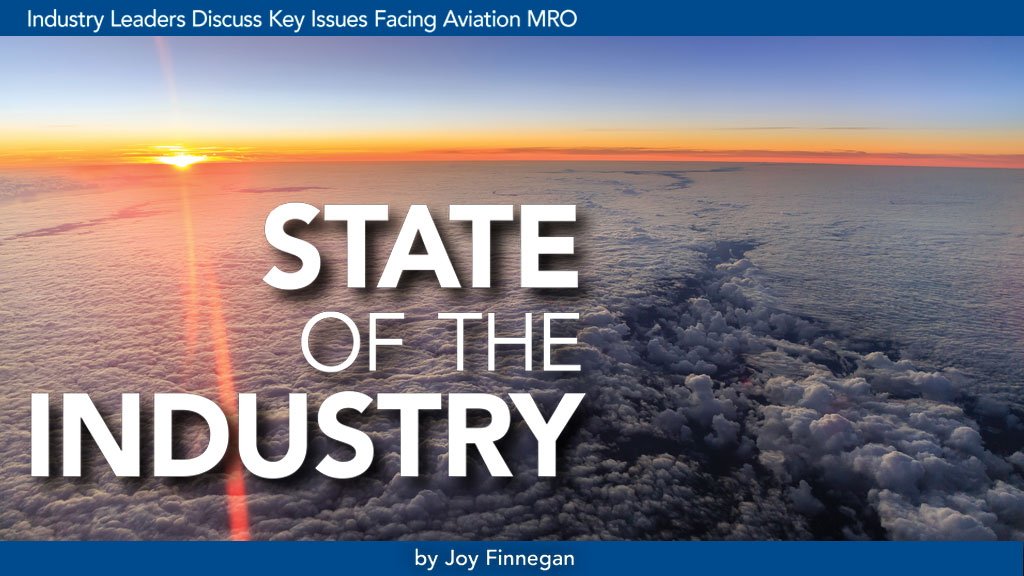Omaha’s Warren Buffett sold out of the airline sector at a loss at the beginning of May. Buffett is quoted as saying he thinks the airline business has changed and has a hazy future. Investors took the move as a bad omen. Buffett usually touts the long view of buying and holding. Revenues are predicted to drop by half or more, according to the International Air Transportation Association (IATA). Airlines are retiring fleets considered not a good fit for their current operational needs. American has officially retired the Embraer E190 and Boeing 767 fleets and the airline is speeding up the retirement of its Boeing 757s and Airbus A330-300s. Planned gradual phase outs of the Boeing 747 and Airbus A380 by airlines are over — they’re out. Delta announced they will retire their B777 fleet. Some say these retirements are not as worrisome as they may seem and were already planned for anyway. Southwest Airlines says it is losing $30-35 million per day and predicts that to continue through June. American Airlines reports they have stanched their daily losses to $50 million per day. All the airlines are now in survival mode as opposed to minimize loss mode. Delta Air Lines CEO Ed Bastian says he believes the industry will take two or three years to recover. All of this leads us to our current situation in MRO. Everything starts from here and will impact MRO. Read on to learn how MRO leaders and industry consultants around the world think we are doing now and what lies ahead.
Ted Colbert, President and Chief Executive Officer Boeing Global Services

What is the state of our industry?
The commercial aviation industry is truly facing an unprecedented set of challenges, and that means a significant near-term market contraction for commercial fleet maintenance and services. It’s a challenge like nothing we’ve faced before, but I remain optimistic that a recovery will come. The work we do is too important for people and communities, for business and trade, and for the security and interconnectedness of our world.
Airline customers have an immediate need for fleet storage and re-activation support, as well as engineering support to adapt passenger airplanes into freight transport configurations.
Boeing is providing up-to-date technical information to ensure appropriate preservation and protection measures are in place for storage, which is the foundation for service re-entry.
We’re also coordinating closely with our customer support team to help reconfigure passenger airplanes into freighters, as fewer passenger flights mean less freight is being transported in the belly of the airplanes during those flights. This continues a trend for greater market demand for freighter aircraft.
Helping customers adjust their operations in favor of cargo transport is one of the ways our industry is helping support the fight against the pandemic by delivering much-needed medical supplies and equipment to support the healthcare industry.
Digital offerings also continue to emerge as critical enablers for airlines as they adjust to future market demands and develop leaner operations. Many airlines and maintenance operators will look to digital solutions to help increase efficiency and reduce operating costs as air travel slowly resumes. Navigation and charting software will be important for new route structure planning, and crew rostering and planning software will similarly support resized operations staffing.
Looking forward, we also see used serviceable materials (USM) playing an important role in supporting the industry’s increase in operations, as consumption of refurbished parts is expected to increase. Many commercial aircraft and engines will not be going back into service and will transition into the teardown market. As a result, USM creates an opportunity to apply our platform lifecycle experience to help airlines and MROs reduce costs while maintaining operational efficiency. And we’re ensuring that we have the resources and inventory to support our customers’ increased demand for quality USM parts, both Boeing proprietary and non-Boeing parts.
Even as we grapple with this challenging near-term outlook in commercial aviation and position ourselves for future changes in the industry, our team is stepping up our support for and partnership with government customers. We remain focused on supporting their missions and fleet readiness levels through our integrated service capabilities. One important focus area is our work in partnership with our customers to create a more predictive maintenance environment through the application of data analytics.
These are challenging times, but I’m proud of how our industry has come together to holistically address the need for new technologies to enhance safety, collaborating in areas where we can to innovate and find creative solutions that will help the flying public to return to the skies at levels akin to what we saw prior to the crisis. This shared goal is ultimately how our industry will weather this storm.
Martin Friis-Petersen, SVP MRO Programs MTU Aero Engines

The aviation industry is in uncharted waters. The industry has gone from boom times with billions in profits to the brink of disaster in the course of a few weeks. What is your company doing to weather this unprecedented time?
During March and April, we ramped down operations to emergency staffing level at our facilities in Hannover and Berlin for a three week period. This was both to protect our employees but also as a result of difficulties in the supply chain. We are extremely proud of our team who maintained minimum service levels, carried out AOG services and received and delivered engines and parts during the ramp down. This minimized disruption for customers, in particular those operating vital cargo transport.
We are now ramping back up to a #SmartNewNormal. We intend to flexibly adjust our MTU Maintenance shop capacities to meet demand going forward. As we have the largest engine MRO portfolio worldwide and service many programs at multiple locations, this ensures our availability to service our diverse customer base and meet their needs and requirements. We are monitoring the supply chain situation, COVID-19 developments and different regional trends daily.
What are your predictions about how the aviation maintenance industry will recover?
As the situation is continually evolving, this is hard to predict exactly. However, it is notable the flight data has stabilized on low levels with slight improvements regionally – mainly supported by increase in domestic travel. Recovery of international travel will depend on how long regulatory travel restrictions are upheld. Nonetheless, we believe that all industry stakeholders need to come together and support the perception that that flying is safe.
MTU is contributing to helping our industry get back up on its feet. We are providing customers with innovative and cost-effective engine service solutions to facilitate the smooth airline re-start that we expect will gradually evolve from the second half of 2020 onwards.
In addition, we continue to partner with customers regarding cost-improvement measures, so that we can support their ramp-up in operations. These measures include intelligent repair solutions, flexible lease services and sourcing teardown engines as well as used serviceable material.
What do you think the long term impact of the pandemic will be?
We are sure that the mid and long-term prospects for the aviation industry remain positive and an uptake will be seen again. All previous crises have shown that the need for mobility and the desire to travel returns. At present, no one can accurately predict how long this will take. In turn, it is even more important to maintain a highly flexible organization that can adjust quickly to market development and opportunities. We are optimistic that after the current downturn, the aviation industry will grow again, and our business base with it. At MTU, we have a broad and predominantly narrowbody MRO portfolio. This combined with our regional spread and diversified customer base means we are highly confident we will emerge from this COVID-19 crisis in due course.
Please give us your silver linings as well – what are the positives that have come or will come out of this unusual time?
The positives are definitely the people. Firstly, our own staff, who have done and continue to do everything in their power to keep the virus out of our facilities remaining highly disciplined and still maintain services for customers. There is a huge sense of solidarity in the face of current challenges and in combatting those to come.
But this also applies to our customer relationships: we have always seen ourselves as partners to our customers, and this will be even more true moving forward. We will work together to find flexible and reliable solutions that work for all sides given the current constrains and limitations we all have, going above and beyond if necessary. We greatly appreciate the trust, support and interest in our employees’ wellbeing that we have received so far.
Dr. Johannes Bussmann, CEO Lufthansa Technik

What is the state of our industry?
“The last few months have clearly shown how volatile and vulnerable the aviation industry is. Even as the MRO side is normally more robust when crisis happens in parts of the world, it hits us this time much harder than in the past. The heavy impact of the coronavirus crisis on international aviation and the MRO business is obvious. Travel restrictions, the cancellation of trade fairs, conferences, business and private trips have forced many airlines to cancel flight connections and to ground their aircraft by 90% and more. This additional burden will bring many customers to the brink of survival, and not every airline will survive. Because even if the crisis peak should be passed sometime in the next few weeks, it will probably take years to get back to normal flight business. This means that operations will be reduced, fleets will become smaller, older, more maintenance-intensive aircraft will be decommissioned, and air traffic as a whole will take a long time to return to pre-corona levels. Under these circumstances, the consequences for the MRO industry will be massive, too. We already see them in our own shop floors and in a consequence have already introduced various measures to mitigate potential operational and economic effects.
We have taken care of all required health measures in our shops based on recommendations of the German Robert Koch institute to ensure an adequate working environment from the health perspective. We have put cost saving measures in effect such as a massive reduction of business trips and internal events, etc. In addition, we have imposed a full hiring freeze and terminated the contracts for almost all temporary workers who hence had to return to their respective agencies. We also have introduced short-time work at our German facilities to react to the lower workload.
Despite these measures we have set up a special organization to secure and continue our business operations for our customers around the world, not only with regard to MRO services but also with regard to a stabile supply chain.
Our international network with our diversified portfolio is paying off in this situation, as we are recording significant workload declines in various business areas, but other areas are still running quite stable.
For example, our Landing Gear division currently is still operating at a good capacity, mainly due to demand from customers offering cargo flights. Our VIP & Special Mission Aircraft division is working on a “close-to-normal” level. And in the engine services sector, we still see a decent demand for our Mobile Engine Services product. Here we offer various MRO services for engines that are primarily performed on-wing or on-site at the customer’s premises. This makes it possible to avoid or at least postpone the odd cost-intensive overhaul in an engine shop. And last-but-not least the current developments in China could mean that the peak of the corona crisis has passed there. Hopefully, this will soon have a positive effect on our regional business. In any case, our subsidiaries and joint ventures in China are already operating almost back to pre-crisis levels.
A well-founded forecast about the further development of our industry is impossible at the present time. There are still daily new restrictions and reductions in international air traffic. While the peak of the corona crisis may be over in parts of Asia, it isn’t in Europe, North America and other regions. No one currently knows when air traffic will return to a more or less normal level. Because even if the health risks of the current crisis should be under control again in the next few months, it will take a long time before the demand for flights rises again significantly and with it the demand for MRO services. I do not believe that we will still return to business as usual this year. But we are doing everything necessary and possible to ensure the economic stability of our company in the medium term and at the same time to be able to offer our customers secure logistics chains and reliable technical services.
But to conclude with a positive statement, I am firmly convinced that the aviation business will regain its former strength in the medium term and return to a solid growth rate. It is important to survive the next months or even the year 2020 and 2021 economically and at the same time to prepare for this post-corona phase now. It will offer us and other strong players good opportunities for positive business development in order to offset the negative impact of the current crisis as quickly as possible. Our early investments in all new aircraft types will proof positively, as on a global basis the fleet will get younger in average in the mid-term. Even if money for new aircrafts will remain tight for a while, which is likely to be the case.”
Russell Ford, Chairman & CEO of StandardAero

What is the state of our industry?
Regarding the COVID-19 pandemic, our first priority is continuing our full focus on following all guidance and precautions to safeguard our employees, customers and communities. All of our global sites and facilities are complying with published guidelines from recognized public health and safety resources and planning for deployment of additional measures as we closely monitor the situation.
COVID-19 business impacts have varied across our different market segments. The natural hedges created by our portfolio of commercial aviation, business aviation, military, helicopter and component repair businesses have given us some insulation from the more immediate dramatic impacts on global airlines and OEMs. Our backlog on certain engine programs and the normal lag time of aftermarket activity has also allowed our shops to remain active on the front end of the pandemic’s impact on North America, in particular.
As far as any signs of bounce back in specific geographies, we are not seeing any near-term positive impacts. Though we believe it is incredibly difficult to forecast in the current environment, we do agree with the methodology and many of the conclusions coming from industry experts based on past crises and profound worldwide traffic declines beginning in late March, which suggest that commercial traffic will take two-three years to recover to 2019 levels.
Following is our current view on how COVID-19 is affecting each of our MRO market segments.
Commercial aviation is clearly the hardest hit, and we expect to see a direct impact to our commercial engine MRO volumes. Despite steep declines in certain turbofan engine volumes, our backlog and pipeline for regional jet and turboprop engine MRO is steadier, but we see signs of declining demand. We are managing this situation daily and have contingency plans for quickly aligning operating costs with volume declines on an engine program-by-program and site-by-site basis.
After a strong Q1, our Component Repair volumes have also been impacted. As a positive offset, we have seen some potential new business opportunities from customers who previously sent work to other shops that are now closed.
In Business Aviation, we have seen strong pipeline of volumes and have experienced unanticipated improvements in scheduled bookings and even higher inputs than planned prior to COVID-19. Many business aviation operators are using this downtime as an opportunity to bring their assets in for early maintenance. Our MRO shops are continuing to schedule work over the next couple of months, but we anticipate volumes declining as 2020 progresses.
Our Helicopter MRO services remain steady state on certain military engine platforms, but we are seeing significant declines on civil engine platforms and airframe mods.
In our Military market segment, the U.S. government services have not indicated any decrease in military sustainment or operating tempo. Inputs are steady and forecast MRO volumes remain consistent despite the COVID-19 situation. Likewise, international military customers have not signaled any decreases in future demand. We are expecting our military MRO shops to continue operating in a normalized fashion.
Prior to COVID-19, we were in expansion mode in all of our business units and hiring many new technicians at virtually all of our sites globally. We have grown in North America and Europe purposefully to establish ourselves in these mature, but growing markets. Additionally, we had been considering numerous opportunities to grow in emerging economies like Asia-Pacific or Latin America, especially as the majority of future aircraft deliveries and subsequently, maintenance requirements will create opportunities for companies like StandardAero.
Looking ahead to the future, the operating model for an MRO company will likely require a more effective combination of cost efficiency, operating flexibility, balance sheet resiliency, market segment diversification, and strategic agility.
We remain bullish about StandardAero’s future growth potential and ability to be opportunistic but like all aerospace companies, we are focused on working our way through the near term uncertainties. In the meantime, all of StandardAero’s primary MRO facilities continue to remain open for business today and our employees are continuing to provide the essential aviation MRO services required by our customers in all of the market segments we serve.
Derek Zimmerman, President Gulfstream Customer Support

What is the state of our industry?
Around the world, Gulfstream’s nearly 4,500-person-strong Customer Support network has been ensuring our customers’ aircraft are ready for a return to flight operations. We have also been focused on ensuring the health and well-being of our customers, our employees, and our communities. Our facilities remained open by quickly adopting new health and safety protocols and network loading has been steady as many operators have used this time for planned and scheduled maintenance. We are committed to helping our customers prepare themselves and their aircraft to resume travel as restrictions are lifted.
Gulfstream already operates the most customer-owned service centers in the industry, and we are continuing to invest to support operators. Since August 2019, we have expanded facilities in Appleton, Wisconsin, and Savannah, Georgia; and added a new service center in Van Nuys, California. We plan to open two new service centers later this year in Palm Beach, Florida, and Farnborough, England. Furthermore, we announced in February 2020 that we will build a new service center at Fort Worth Alliance Airport in Texas. That opening is scheduled for the second half of 2021.
As the world emerges from the current crisis, we’ll see more businesses and individuals recognize the benefits of business aviation, and with that, an increase in discretional maintenance, repair and overhaul work. Gulfstream is ready across the network, with all our aircraft service centers in the U. S. and abroad capable of upgrading, modifying, or refreshing aircraft avionics, connectivity, furniture, and upholstery.
Throughout Gulfstream’s 60-year history, our service capability has been a major part of who we are. Strong service and support are integral to the aircraft ownership experience. It is part and parcel of Gulfstream’s resilience and will continue to strengthen our industry.
Brian Rohloff, SVP Customer Support Textron Aviation

What is your company doing to weather this unprecedented time?
The health and well-being of our customers, our employees and our community is our top priority during this pandemic. We are adhering carefully to social distancing guidelines and are making face masks for all employees to limit the spread of the virus. We’ve also partnered with Wichita State University to manufacture plastic face shields, which we’re donating to medical providers to be worn alongside critical personal protective equipment (PPE).
In terms of the business, we are drawing upon our extensive experience of overcoming tough industry times, such as the aftermath of 9/11 and the 2008 financial crisis. We are continuing to invest in product development and have adapted our means of communicating with customers by providing options, but we try to keep it as personalized and innovative as possible.
How is TXTAV’s service network supporting customers during the pandemic?
We are maintaining operations across our facilities and are continuing to provide 24/7 service and parts distribution support. We also introduced financing options for our customers to ensure maximum affordability and flexibility during this challenging time, and have shared guidance on cleaning and caring for aircraft.
Our 1CALL service is fully operational for AOG support across the globe, which is critical to those flying repatriation or special mission flights. 1CALL connects our customers with Mobile Service Units (MSUs) equipped to deliver factory-direct support in the field. That includes service for engines, tires, brakes and more. We have nearly 80 MSUs worldwide, so we can respond to our customers’ needs for service or parts quickly and efficiently during this crisis period.
Could you give some examples of how your aircraft are being used for Covid-19 relief?
Whatever problem our customers face, our product line can help solve it. Our aircraft are used for a wide variety of special missions, including air ambulance, flight inspection and cargo.
For example, one of our customers is the disaster response company Active Deployment Systems. The organization is supplying life support services, such as large tent systems, large showers and restroom trailers, fuel – anything required to set up a human shelter anywhere in the United States. Currently, the company is supporting hospital and military operations across the whole of the mainland U. S. with shower and laundry trailers, fold and wash laundry – the kind of tasks that are essential, but that people probably don’t give much thought to. They are using a Cessna Citation CJ2 jet, which is invaluable for their operations, particularly during this pandemic.
Please give us your silver linings as well – what are the positives that have come or will come out of this unusual time?
I am incredibly proud of how our company has dealt with the crisis so far, and we are doing everything we can to have a positive impact during this time. It’s so rewarding to see our products being used to support Covid-19 response and recovery efforts. Our aircraft are being used as air ambulances, for repatriation, and as a means of transporting medical equipment and supplies to hospitals around the country.
The force of this virus will subside, and the economy will recover. When it does, Textron Aviation will be here, persevering like we have for more than nine decades, and ready to serve our customers and communities with pride.
Philip Anson Jr., CEO STS Aviation Group

What is your company doing to weather this unprecedented time?
The safety of our employees is our primary concern right now. Second to that, however, we are focused on costs and cash flow from a business management standpoint.
STS Aviation Group (STS) is a diversified company. Some of our divisions are service focused while others are asset intensive. Many are outside of the United States. Cost management for each division has been a company-by-company exercise. It feels like we have now gone through our annual cost budgeting and revenue forecasting process many times over, and we will continue to do so during these unprecedented times.
Cargo operators and military programs continue to show strong demand. Asia is in the early stages of showing increased demand as their economy begins to come back online.
Managing our customer demand to our costs and cash burn is now our biggest focus for the long term.
What are your predictions about how the aviation maintenance industry will recover?
We are predicting a slow recovery. Required aircraft maintenance will not be a choice as our customers begin to operate the aircraft more. Many of our airline customers do not have significant internal resources to support much of their aircraft maintenance needs, and they will rely on maintenance suppliers like STS to support them as they begin to fly more. We will be here for them as that happens.
What is the economic outlook for the aviation maintenance sector?
The airline spend will be reduced substantially because of the lower number of aircraft being operated. Prior strong customer relationships will be key to maintenance providers picking up business as the industry begins to come out of this. Airlines with the least amount of internal maintenance resources will be in need of the most help. As in past economic downturns, our customers have turned to companies like STS Aviation Group to help with the initial ramp up before adding significant internal resources. If this happens, as it has in the past, the aviation maintenance sector could see an earlier uptick in demand than the industry as a whole.
How long do you predict the recovery period will be?
We have always been accused of being an overly optimistic group, but we are also realists. We expect to see a small uptick in demand mid-summer, but no real recovery trends will show until Q4 of 2020. We are hoping to see good recovery trends to start showing Q1 of 2021, but there are still a lot of things still up in the air that will affect that timeline.
What can we expect for the rest of 2020; for the next two years; five years?
Our crystal ball is not working as well is it has in the past, but we can listen to the industry experts as everyone else is. It looks like we are in for long-term recovery regardless of who you talk to. Each business will have different timing of demand schedules based on their individual customer mix. We have a good mix of cargo operators and mid-sized airlines. We have also had a good focus on the regional carriers and military program support. We serve many international locations and customers that may have earlier recovery curves than what we can expect here in the United States.
What do you think the long-term impact of the pandemic will be?
We think there will be a lot of organizational restructuring from the carrier side of things. More consolidation of the supplier bases will happen. Supply chain restructuring, organization efficiency and cost focuses will be the name of the game. As much as we all hate to go through times like this, it often forces organizations to make hard but long overdue decisions that possibly would not have been made otherwise. Decisions that ultimately can allow a business to come away leaner, meaner and more profitable. Those that survive often find themselves in even stronger financial positions in the long term. We found that to be the case after 9/11 for our company.
Please give us your silver linings as well – what are the positives that have come or will come out of this unusual time?
Change is scary, especially when it is as dramatic as what we are now going through now. The negatives are obvious, but the opportunities that will present themselves on the recovery end can be tremendous. Every organization in our industry with the right mindset, a solid plan, and resources to get them through to the recovery phase will have new, and abundant, opportunities to interact with customers that were not present prior to the downturn. Those organizations that are adaptive and innovative should fare well in this “new-world” economy.
Jonathan Berger, Managing Director Alton Aviation Consultancy

What should companies be doing to weather this unprecedented time?
With a long history of weathering numerous industry shocks, a playbook of cash preservation lessons-learned and best practices has evolved for airline maintenance and engineering divisions to follow. This includes:
A. Engineering and Maintenance Planning:
- Defer or cancel all non-essential spend (e.g. planned capital projects and aircraft modifications)
- Right-size the fleet; in collaboration with the network & fleet planning teams, support development of tail-specific aircraft retirement, storage, and lease return plans
- Leverage unencumbered assets for liquidity through secured credit vehicles or sale-leasebacks (e.g. spare engines, component inventory, GSE, tooling, etc.)
B. Airframe Heavy Maintenance:
- Avoid costly maintenance expenditures by parking or retiring aircraft as they approach their next scheduled major overhaul
C. Engine & Component Maintenance:
- Execute ‘green-time’ programs to avoid costly shop visits (i.e. leverage time remaining on their stored or parked fleet of spare engines, APUs, and landing gears)
- Tap the engine lessor market to defer engine shop visit inductions
- Harvest stored or parked aircraft for aircraft components to reduce spares purchasing and repair activity
- Develop alternate materials strategy (i.e. accelerate adoption of surplus parts/USM, PMA, and DER repairs)
D. Line Maintenance:
- Leverage robust third-party Line Maintenance supplier market
- The prudent and rational strategic path forward for MRO executives is to focus on their fundamental core competencies while ensuring the right balance of fixed vs. variable costs in order to be well positioned to rapidly increase capacity as demand returns, and be better prepared to weather the next inevitable downturn.
What are your predictions about how the aviation maintenance industry will recover?
Very slowly.
What is the economic outlook for the aviation maintenance sector?
Cash is king – those companies that have don’t have enough access to cash to get through the next 12-18 months may not survive.
How long do you predict the recovery period will be?
100% dependent upon when a vaccine is developed. Anywhere from 2-5 years.
What can we expect for the rest of 2020; for the next two years; five years?
Pain.
What do you think the long term impact of the pandemic will be?
Similar to how the terrorist attacks of 9/11 spawned a multi-billion dollar aviation security industry, one could assume that the Covid-10 pandemic will undoubtably launch a multi-billion dollar aviation health industry. With regards to aircraft maintenance, 9/11 led to the requirement to retrofit all aircraft with new secure cockpit doors and cabin video monitoring systems. Perhaps the post-pandemic aircraft will require new seating configurations, cabin air filtration systems, etc.
Please give us your silver linings as well – what are the positives that have come or will come out of this unusual time?
It’s hard to believe that just a few short months ago, the major issues keeping MRO executives up at night (e.g. skilled labor shortages, limited hangar capacity, and engine overhaul material shortages) have since vanished virtually overnight because of COVID-19. The flood of used serviceable material (USM) available in the market will help keep those airline survivor’s MRO costs low.
Rich Phillips, Partner Elevate Innovations

What should companies doing to weather this unprecedented time?
Looking back at the financial crisis of 2008/09 is helpful when viewing a path for companies today. The speed and severity this time is much higher, but the necessity to reform towards strength is the same. Technology and automation were leveraged at the time to improve efficiency, spread decision-making, and optimize the available assets. In today’s world, that defines “Digital Transformation” and the adoption of a data-driven operation. Companies that have invested previously in a strong digital portfolio are more resilient to the pressures placed on the organizations relying on human engagement. Companies have the opportunity to take a step back and look at their portfolio, identify where they are “human heavy” and “digital light” and look to start or accelerate progress in addressing that balance.
What are your predictions about how the aviation maintenance industry will recover?
The uncertainty around market recovery hides the potential for the maintenance industry. As capacity and forecasts settle, providers will have ideal conditions to partner with their customers and prioritize work. Finance concerns will continue to define timing, but maintenance providers that can better utilize data to determine how to clear work and put back into service should be advantaged. For a service provider to be able to work with the customer and optimize work enables the airline to maximize their reduced fleet for more efficient operations.
What is the economic outlook for the aviation maintenance sector?
Airline fleet management shows that the maintenance sector is an early indicator of recovery for the wider market. Delayed and cancelled new aircraft mean that airlines will seek to invest more into current fleet. Aircraft previously scheduled for exit due to maintenance thresholds are now viewed as more viable. The entirety of an airline’s grounded fleet (often more than 70% of the total) will not be fully reactivated during the recovery. The pressure will be on to selectively source and recover individual aircraft which present ideal economic operating models. The maintenance sector is poised to provide partnership to customers through the selection process and enable a path to financial improvement.
How long do you predict the recovery period will be?
There is not enough data to clearly state the period, but indications point to a 12-18 month window of recovery. During this time the industry will radically adjust fleet size, operations, automation, and resourcing. The fleet composition will change, meaning that many airlines will continue operations with aircraft well past their original end-of-service dates. A full recovery to balanced operations and healthy financials is expected to take at least 2-3 years.
What can we expect for the rest of 2020; for the next two years; five years?
2020 will see the stabilization of fleets at reduced levels, as airlines continue to work through the individual aircraft for performance. These organizations will also begin rapid transformation towards data-driven operations which could stretch to the end of 2021, however changes will begin to make an impact this year. The additive value of change means that stability reached in the next two-three years should place the airlines and industry as a whole in position to invest and grow. In five years, the industry will look smaller than 2019, but will be more efficient, financially healthy, and designed to survive future shocks better than previously.
What do you think the long term impact of the pandemic will be?
There is no doubt the pandemic will have lasting effects on the industry. However, the nature of the impact, the speed and level of reduction, and lack of governmental clarity on how they will address social activities in the future, makes it extraordinarily difficult to predict. Aviation is a critical global infrastructure, and demand in cargo, business, and some family travel is the foundation from which the industry will grow. Expected passenger reductions and ongoing travel restrictions will most heavily impact the longer international routes that have been primary growth for many airlines in the last five years. Recovery will likely be a hub/spoke operation, with business-heavy routes prioritized. The change to the OEM backlogs will be a primary indicator of the long-term impact on the industry. Digitalization will be expected, and customers will begin to observe changes to operations that were not previously supported such as facial recognition boarding, aircraft system improvements, seating configurations and spacing. Passenger costs are likely going to be higher during the recovery, and may not reach 2019 levels for some time. Customer loyalty programs will evolve and be more closely utilized by the operational digital teams as well.
Please give us your silver linings as well – what are the positives that have come or will come out of this unusual time?
The Digital Transformation of aviation will be quite positive and reflect what has happened in other industries to massive benefit. The operational reduction will improve utilization and focus the drive towards dynamic maintenance, improved visibility, and agility. Digital operations will provide the value lever to recover, stabilize, and grow towards the future of air transport. Maintenance is a critical element of this process, and providers are in position to develop closer customer relationships and more predictable workflows.
Ryan Waguespack, Senior Vice President National Air Transportation Association (NATA)

What should companies be doing to weather this unprecedented time?
Repair stations are continuing to see activity, as customers are using this down time to complete inspections and upgrades. Their focus should be on maintaining their workforce and furthering their internal safety initiatives. MROs are finding great success in specializing with certain models and makes.
What are your predictions about how the aviation maintenance industry will recover?
The maintenance sector will ultimately be affected by this pandemic, but we have yet to see how that ripple will take place. Business aviation is anticipating a boom, as companies look to keep their workforce safe. Private travel is expecting an increase, as the airlines scale back and cut passenger capacity to only a fraction. It will take years for the airline industry to return to pre-pandemic levels. Until we see how MRO businesses are impacted, we won’t know what recovery will look like.
What is the economic outlook for the aviation maintenance sector?
As more aircraft enter into service and activity begins to increase, MROs around the country will see more work. If aircraft sales continue to rise, the need for more modifications will also increase, filling those potential future gaps in business.
How long do you predict the recovery period will be?
Flight activity is going to take months to get back to some semblance of normality, we will most likely see a W shaped flight activity recovery period. We will see companies that currently own business aircraft examining all methods of utilizing it to maintain their business prosperity, including expanding use through charters or by their own employees.
What can we expect for the rest of 2020; for the next two years; five years?
For the remainder of 2020, we are cautiously optimistic. The next two-five years are hard to tell, as so many factors play into this.
What do you think the long term impact of the pandemic will be?
It’s going to force all businesses to look internally at sustainability. Businesses will look to build more cash reserves and operate with a lean workforce — doing more with less.
Please give us your silver linings as well – what are the positives that have come or will come out of this unusual time?
It’s been inspiring to see so many of our members from across the industry, especially MROs, innovating to protect the safety of their employees and working to give back to their communities. We are hearing story after story of our members who are diversifying their operations to manufacture and deliver much-needed PPE and other critical supplies and services. Our industry was born out of ingenuity and continuous innovation. This spirit and drive will get our industry through these incredible challenges and beyond.
Andy Hakes, CEO AireXpert

We spend a lot of time speaking with mid-level & senior management teams at airlines and based upon what we’re seeing and hearing, this is indicative of what we expect to occur as we emerge from these horrible market conditions. Several common themes seem to regurgitate throughout all of our conversations with air carriers across the globe.
The (very) bad news for U.S. carriers is that there appears to be significant cause for concern as the terms of the CARES act expire. While the fallout for folks who work in MRO is obvious, the ripple effects are also going to be problematic for airlines who have to deal with a mass exodus of talent, knowledge and experience.
For U.S. airlines who now have taxpayers as major shareholders, passenger rights regulations could again become a hot topic as they have in Europe and more recently, Canada. Even if this issue doesn’t gain traction in the formal sense, expect increased congressional & media scrutiny along with a higher level of attention to service and operational failures.
Several leadership teams have already publicly acknowledged that the post COVID-19 recovery will produce airlines that are smaller and “more efficient”. An oft-repeated phrase that we’ve heard in conversations is that “we have to figure out how to do more with less”. While we’re in 100% agreement, I personally don’t envy the decision makers who have to figure out where to slice and dice when peoples’ livelihoods are at stake.
One area of concern that we’re focusing on now is the health and continued viability of airline vendor networks. We recently reached out to a very specific yet large cross section of vendors that airlines are heavily reliant on to assess their outlook and positions. The responses ranged from neutral to downright worrisome. A significant percentage of the vendors which supply airlines tend to fall into the category of “mom & pop” operations who haven’t yet defined a strategic niche, operate on thin margins and lack access to external capital. The sustained loss of revenue is hugely problematic to the extent that COVID-19 could prove to be an existential crisis for them.
Within that market and where cost pressures are always a significant factor, the margins that these companies live off of often aren’t enough to pay for training or senior talent. As a result, turnover tends to be high and airlines have to swallow the bitter pills that often accompany a lack of highly experienced technical talent. At best, the vendor networks will somehow survive the downturn. At worst, the appetite for further cuts and pricing pressures simply may not be there.
To add another layer of complexity, (as if we needed another) several managers privately voiced their frustrations to me, (in effect) saying, “When airlines were handing out performance bonuses and profit sharing checks, we were left out in the cold. Now that shared sacrifice is the message, they’re saying ‘we’re all in this together’.” Given that sort of sentiment, airlines may very well have to take some measures to strengthen their vendor partnerships going forward.
Another minefield which might be drastically altered by squeezed budgets is maintenance training. While training makes practical sense, the upfront costs are extensive and the return on that investment is difficult to quantify in a traditional sense. In an environment of extreme cost-saving measures, CFO’s and finance directors are likely to take an axe to training budgets which ultimately will have long-term & negative consequences for maintenance operations.
Like many companies, we’re hoping for the best and planning for the worst. It’s encouraging to see indications of a small uptick in passenger traffic and it’s our hope that the revenue folks can entice people back onto the planes. As long as the trend continues, we’ll see the operational folks focusing on the many things that will be necessary to ensure that airlines can successfully do “more with less.”
Neil Book, CEO and President JSSI

What is the state of our industry?
Based on the real-time data available to JSSI, April 2020 flight hours are down approximately 75% compared to April 2019. As a number of countries begin to ease restrictions and borders begin to re-open, we predict a very modest increase in the month of May with regards to flight hours.
Until there is a highly effective treatment or vaccine for COVID-19, we expect to see significant changes to how business jets are being utilized. The largest demographic of business jet owners are males over the age of 60, who fall into a “high risk” group. I’ve had extensive conversations with a number of clients that fall into this category and while they will continue to fly, they intend to reduce the frequency of their travel, so as to avoid hotels, conferences, etc.
With that said, we are already seeing a significant number of new users migrating to a wide range of business aviation options, such as jet card, charter, fractional and even outright ownership. For many businesses and individuals with the resources, the health risks associated with walking through a commercial airport with thousands of people and getting onto a commercial flight is simply too great.
In JSSI’s Q1 Business Aviation Index, we saw the lowest March flight hours since the global financial crash of 2008. April flight hours are the lowest we have on record. While I do believe flight hours will steadily increase from this point forward, it may take several years before we get back to 2018 and 2019 levels.
Oliver Wyman Updates MRO Forecast Due to Impact of COVID-19

Oliver Wyman has revised and updated their annual MRO Forecast as a result of the impact of the coronavirus and related illness, COVID-19. They have provided Aviation Maintenance with that update. The authors of the revised report are Dave Marcontell (shown here) partner in Oliver Wyman’s Transportation and Services practice; Tom Cooper, vice president of CAVOK, Oliver Wyman’s technical consultancy and services division; Carlos Garcia Martin, principal in Oliver Wyman’s Transportation and Services Practice; and Ian Reagan, senior manager with CAVOK, who leads Oliver Wyman’s MRO Market Intelligence group. Their updated forecast and comments follow.
It is difficult to overstate the effect the COVID-19 pandemic is having on commercial aviation. In the months since the new strain of coronavirus that causes COVID-19 first emerged, passenger air travel has come to a near standstill as a result of the need for social distancing and international travel restrictions to contain its rapid spread. Air carriers around the world are facing extreme financial pressures and are cutting capacity at unparalleled rates in the absence of meaningful passenger demand. Some airlines have shut down completely, many to never return.
Simultaneously, the global economy is in a tailspin, with unemployment rates at highs not seen since the Great Depression, making the road back for the industry that much harder. From the industry’s perspective, there are no real precedents to provide lessons on a clear way forward, including the terrorist attacks on September 11, 2001 or the collapse of business that accompanied the 2008 global financial crisis and subsequent global recession that followed.
One fact is clear: All paths to recovery begin with epidemiology. Until we get a grasp on what lies ahead from COVID-19, we can’t expect to rebuild either the economy or aviation on a firm foundation.
Anticipating the Future
In an effort to get ahead of what’s to come for various industries, Oliver Wyman has developed the Pandemic Navigator. The model forecasts the number of new and cumulative coronavirus cases across nearly 40 countries, incorporating the effectiveness of public health containment and suppression measures. We combined its output with forecasts on gross domestic product growth and historical and near-term air travel booking data from the International Air Transport Association and developed three possible scenarios for passenger demand recovery.
Our baseline forecast for global virus containment represents a more moderate view of what lies ahead for the industry and the one we consider most likely. It assumes multiple waves of contagion. Under this scenario, passenger revenue begins its recovery in late summer 2020 and reaches 60 percent of pre-COVID levels by late autumn when it will plateau as new infection hotspots flair up. Growth remains suppressed until a vaccine is developed, which we expect to happen sometime between spring and summer of 2021 assuming fast-tracking by regulators. Global air travel will finally return to pre-COVID levels by the end of 2021, nearly two years after the initial outbreaks. Regional, domestic and international variations will apply.
To underscore the degree of uncertainty behind any forecast, we have also developed two alternative scenarios. One assumes a single wave of outbreaks, which allows for continuous recovery beginning in late summer 2020. Passenger revenue would steadily climb to 90 percent of pre-COVID levels by early 2021. While the United States and some European countries are still struggling to effectively contain emerging outbreaks, this scenario remains plausible, particularly in specific nations like China where COVID-19 seems to be under control.
The third scenario envisions a prolonged epidemiological response during which there are multiple waves of contagion and delayed vaccine development. It also assumes an extended global economic recession. In this most pessimistic scenario, the virus is not contained until early 2021. The recovery is much more gradual, not reaching pre-COVID levels until 2023.
In the case of the ongoing COVID-19 pandemic, the contraction of the global commercial in-service fleet is already more pronounced than in any of the prior crises: As of late April, over 65 percent of the pre-COVID fleet of 27,500 commercial aircraft have been parked, with many never to return to service. Previous shocks to aviation have also led to early aircraft retirements, and COVID-19 will be no different. While for the last five years annual retirements have ranged from 550 to 750 planes, we expect to see a surge to well over 2,600 during the next 12 months.
As previously described, the pace of fleet recovery is expected to require several years. Our baseline scenario does not expect the fleet to return to its pre-COVID size until the end of 2022.
Impact to MRO Demand
Assuming our baseline scenario that anticipates recovery starting later this summer, the current trajectory for fleet reductions and lower aircraft utilization would reduce global demand for maintenance, repair, and overhaul (MRO) in 2020 by more than $48 billion, or 53 percent, from our original pre-COVID forecast of $91.2 billion. All regions of the world will experience declines of 40 percent or more.
As a result of this unprecedented crisis, airlines have focused on cash management and survival. For many, that will translate into far lower demand for MRO services and months, if not years, of stripping parts from parked or retired airplanes. This cannibalization will create a substantial ripple effect throughout aviation’s supply chain and will make it critical for MRO providers to consider supplier survival, as well as their own cash flow management. MRO response tactics need to focus on supply chain fixed costs during the crisis and preparation for a long recovery period.
For airlines, especially those receiving governmental support in the near term, it will mean restructuring to accommodate extended, depressed demand. Executives should be considering zero-cost budgeting, contract renegotiating, and the right-sizing of operations to create a more flexible and variable cost structure. In addition, airlines and MROs alike will need to consider how to maintain the existing talent in the market, so whenever the industry finally begins to get back on its feet the necessary experienced personnel are there to support renewed growth.
The MRO industry is comprised of an incredibly diverse set of companies. The largest providers have evolved through years of growth and consolidation. COVID-19 will represent another challenge in their evolution, likely the most significant in their history. However, the smaller MRO providers, which are much more numerous, may face an existential threat to their business. In less than three months, the COVID-19 pandemic has wiped out a substantial portion of industry value, both for shareholders and on balance sheets. This will take years to rebuild, but those who have reacted quickly to preserve cash and manage their underlying cost structures will be in a stronger position to capitalize on new and emerging opportunities, which history has shown will inevitably appear. — Courtesy of Oliver Wyman
